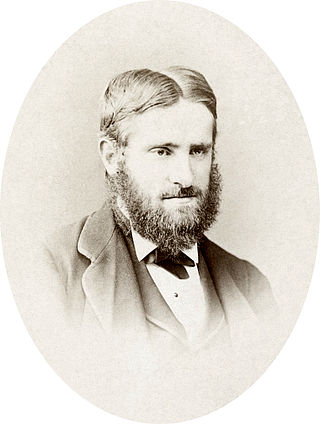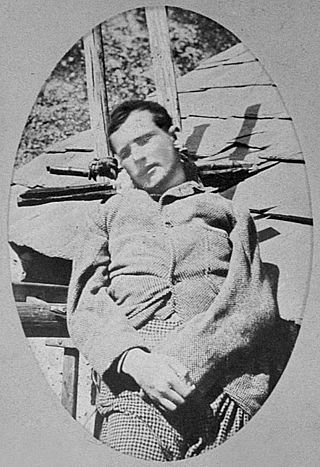
Mont Blanc is the highest mountain in the Alps and Western Europe, and the highest mountain in Europe outside the Caucasus Mountains, rising 4,805.59 m (15,766 ft) above sea level, located on the Franco-Italian border. It is the second-most prominent mountain in Europe, after Mount Elbrus, and the 11th most prominent mountain in the world.
The higher region of the Alps were long left to the exclusive attention of the inhabitants of the adjoining valleys, even when Alpine travellers began to visit these valleys. It is reckoned that about 20 glacier passes were certainly known before 1600, about 25 more before 1700, and yet another 20 before 1800. Even though the attempt of P.A. Arnod, an official of the duchy of Aosta, in 1689 to "re-open" the Col du Ceant may be counted as having been made by a non-native, historical records do not show any further such activities until the last quarter of the 18th century. Nor did it fare much better with the high peaks, though the two earliest recorded ascents were due to non-natives, that of the Rocciamelone in 1358 having been undertaken in fulfilment of a vow, and that of the Mont Aiguille in 1492 by order of Charles VIII of France, in order to destroy its immense reputation for inaccessibility – in 1555 Conrad Gesner did not climb Pilatus proper, but only the grassy mound of the Gnepfstein, the lowest and the most westerly of the seven summits.

The mountains of the Massif des Écrins form the core of Écrins National Park in Hautes-Alpes and Isère in the French Alps.

La Meije is a mountain in the Massif des Écrins range, located at the border of the Hautes-Alpes and Isère départements. It overlooks the nearby village of La Grave, a mountaineering centre and ski resort, well known for its off-piste and extreme skiing possibilities, and also dominates the view west of the Col du Lautaret. It is the second highest mountain of the Écrins after the Barre des Écrins.

The Barre des Écrins is a mountain in the French Alps with a peak elevation of 4,102 metres (13,458 ft). It is the highest peak of the Massif des Écrins and the Dauphiné Alps and the most southerly alpine peak in Europe that is higher than 4,000 metres. It is the only 4,000-metre mountain in France that lies outside the Mont Blanc Massif. Before the annexation of Savoy in 1860 it was the highest mountain in France.

The Mont Blanc massif is a mountain range in the Alps, located mostly in France and Italy, but also straddling Switzerland at its northeastern end. It contains eleven major independent summits, each over 4,000 metres (13,123 ft) in height. It is named after Mont Blanc, the highest point in western Europe and the European Union. Because of its considerable overall altitude, a large proportion of the massif is covered by glaciers, which include the Mer de Glace and the Miage Glacier – the longest glaciers in France and Italy, respectively.
Sarah Katharine "Katy" Richardson, also referred to as Kathleen Richardson, was a British mountain climber. She made numerous first ascents in the Alps and climbed frequently with her close friend Mary Paillon.

Christian Almer was a Swiss mountain guide and the first ascentionist of many prominent mountains in the western Alps during the golden and silver ages of alpinism. Almer was born and died in Grindelwald, Canton of Bern.
The silver age of alpinism is the name given in the United Kingdom to the era in mountaineering that began after Edward Whymper and party's ascent of the Matterhorn in 1865 and ended with W. W. Graham and party's ascent of the Dent du Géant in 1882.

William Augustus Brevoort Coolidge was an American historian, theologian and mountaineer.

Pic Gaspard is a mountain in the French Alps, one of the tallest in the Massif des Écrins. It was named in honor of the celebrated L'Oisans guide Pierre Gaspard, conqueror of La Meije on 16 August 1877 in the company of Emmanuel Boileau de Castelnau.

Henri Cordier or Henry Cordier was a French mountaineer. In his short two-year career, he became the first Frenchman to reach the level of the English members of the Alpine Club, in the silver age of alpinism in the second half of the 19th century, which was dominated by the development of mountaineering in the Alps. With some of the Alpine Club's mountain guides and mountaineers, he led significant first ascents in the Mont Blanc massif and in the Dauphiné Alps.
Sir John Oakley Maund was an English banker, stockbroker, entrepreneur, hunter and mountaineer during the silver age of alpinism.

Henry or Henri Duhamel was a French mountaineer, author and skiing pioneer. He introduced the practice of skiing to his circle of friends at Grenoble, leading to the creation of the first ski club in France.

Pierre Gaspard was a French mountain climber, one of the greatest mountain guides in the silver age of alpinism. He made the first ascent of La Meije on 16 August 1877 with his son and Emmanuel Boileau de Castelnau. Their ascent followed the south buttress Arête du Promontoire, which became the "normal route".

The Grand Pic de Belledonne is the highest mountain in the Belledonne massif in the Dauphiné Alps at 2,977 metres (9,767 ft).
Roche Méane is a two-summit peak in the Massif des Écrins in the French Alps. It is located on the crest between Barre des Écrins and La Meije. The west summit is 3,728 metres (12,231 ft) high and is called Pic Maître; it is on the border between the Provence-Alpes-Côte d'Azur region of the département of Hautes-Alpes and the Rhône-Alpes region of the département of Isère. The east summit is 3,712 metres (12,178 ft) high and is entirely within Hautes-Alpes. The two summits are located in the small massif of La Grande Ruine, the highest summit of which is that of Pointe Brevoort, which is next to Roche Méane. Below the summits are rocky cliffs and three glaciers: the Clot des Cavales, the Grande Ruine glacier, and the Supérieur des Agneaux. In 1907 Baedeker described the mountain as a "very difficult" two-and-a-half-hour ascent from this last.

The Marathon du Mont Blanc is an annual marathon distance (42.195 km) alpine trail running event held in Chamonix, France. The Marathon du Mont Blanc race is the titular event but the name also refers to the group of longer and shorter distance races one or more of which competitors can compete in over a three-day period starting on the last Friday in June.

The Goûter Route is one of the two normal mountaineering routes used to reach the summit of Mont Blanc in the Alps, ascending to a height of 4,808 metres (15,774 ft). The route lies on the north side of the mountain, in France. Usually reckoned as the easiest route up Mont Blanc, it is extremely popular with mountaineers, seeing thousands of ascents per year.

Joseph Vallot was a French scientist, astronomer, botanist, geographer, cartographer and alpinist and "one of the founding fathers of scientific research on Mont Blanc". He is known mainly for his fascination with Mont Blanc and his work in funding and constructing a high-altitude observatory below its summit, and for the many years of study and research work that he and his wife conducted both there, and at their base in Chamonix. The observatory and adjacent refuge that he constructed for use by mountain guides and their clients attempting the Mont Blanc summit both still bear his name today, despite being rebuilt in modern times.
















